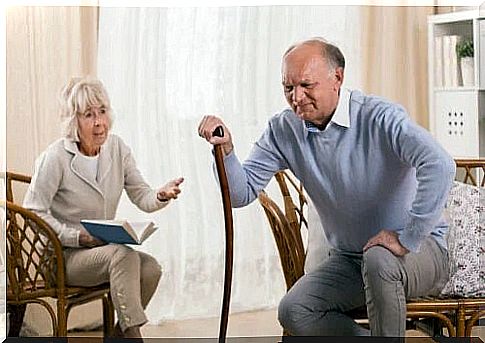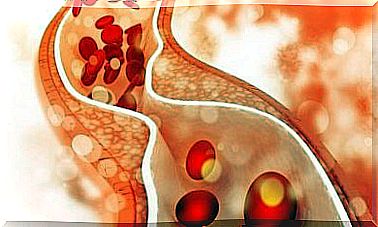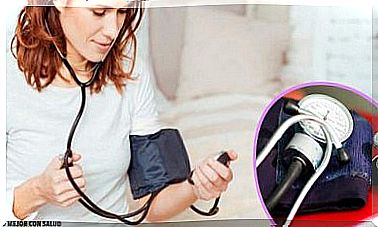Post-fall Syndrome In Older Adults: Unsuspected Dangers

Post-fall syndrome in older adults is a condition that, as the name suggests, occurs after a fall. It has to do with the fear of falling again. This often leads to physical and psychosocial consequences.
It is estimated that about 30% of people over the age of 65 suffer an annual fall. At over 75, the rate increases to 35%, and at over 80, it reaches 50%. As you can see, post-fall syndrome is a problem that can affect many older people.
Post-fall syndrome in older adults: consequences

Post-fall syndrome or the fear of falling again causes important consequences in the lives of the elderly. These manifest themselves on different planes of life and can be very serious. The main effects of this condition are as follows.
Physical consequences
One of the most important consequences of post-fall syndrome occurs physically. The fear of falling again leads to a significant reduction in mobility. Generally, those who suffer from this condition become sedentary.
The older adult gets into the habit of sitting down for a long time, or even lying down. Avoid spaces where there is no support and also avoid stairs or other structures that present an obstacle or risk.
Over time, sedentary lifestyle leads to muscle loss , difficulty walking and a cycle of physical decline. Skills are gradually lost.
Psychic consequences
The most obvious psychological consequence of post-fall syndrome is the loss of self-confidence. Often, the elderly adult had to sit on the floor for a while before being helped. At other times, he was forced to go to the hospital and was afraid of dying.
All this leads to insecurity. The adult feels that he needs the continuous help of others, even if it is not the case. This reduces their autonomy and promotes dependence on others.
In those with post-fall syndrome, there are also features of anxiety and depression. There may also be signs of confusion and disorientation. Thus, in everyday life, there is a process of restriction that leads to a deterioration in quality of life.
Social consequences
The social consequences of post-fall syndrome are very visible. First of all, as we have already mentioned, this problem favors the links of dependence. Also, people around supraprotejează elderly, which increases the lack of autonomy.
Insecurity leads to limited social contacts. This can lead to a state of progressive isolation that encourages the symptoms of depression and, in addition, causes cognitive impairment.
Under these conditions, the likelihood of developing disabilities or dementia increases. Even if this point is not reached, life is monotonous and this is manifested in the physical and mental health of the elderly.
How to overcome post-fall syndrome in older adults?

It is important to realize that an older adult will need support, understanding and motivation after suffering a fall. Ideally, you should not wait too long to begin interventions to help him overcome post-fall syndrome.
One of the most effective tools in these cases is Beck’s cognitive therapy. It is based on the idea that it is necessary to achieve gradual success in order to determine the affected person to change his negative opinion about himself, to improve his expectations and to reduce the symptoms of depression.
One of the most effective techniques in this type of therapy is called “chaining”. It consists in setting a general goal of conduct and then dividing it into subunits.
To apply this technique, you must follow this sequence:
- Motivation. It is important for the person concerned to feel motivated to carry out the process alone and not under pressure from others. To do this, understanding, affection and enthusiasm are essential.
- Explanation. It consists in describing the action to be performed. For example, walking out of bed at the bedroom door.
- Verification. The older adult must explain in his or her own words what action he or she will take. They need to identify any issues or obstacles they may encounter.
- Complexity. Every goal must be achieved. Then, its complexity must be increased.
- Strengthening. It is very important that the achievements are highlighted.
- Perspective. Emphasis must be placed on the patient’s abilities so that he can change his idea of himself.
- Evaluation. As you progress, it must be determined whether the elderly person will need help to get around.
Prevention of post-fall syndrome
After the fall, the most important thing is to identify the cause and correct it. The environment of an older adult must be safe, so all risks must be minimized. It is also important to perform proper physical rehabilitation.
If post-fall syndrome occurs, the adult should be encouraged to maintain autonomy and regain self-confidence.









